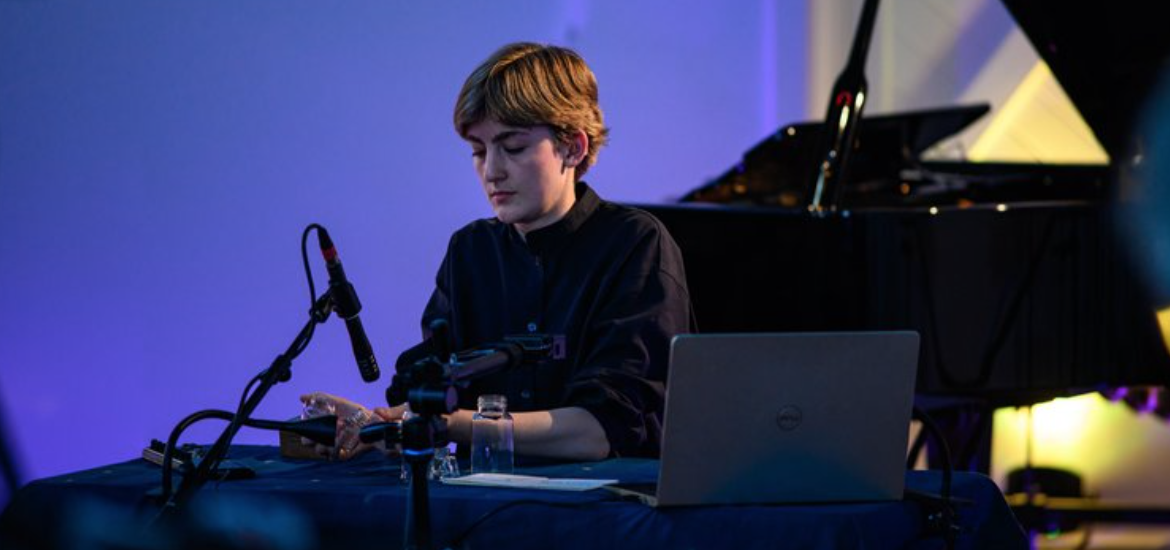Inclusion - Sharing the Stage
Backstage Music intends to present adventurous programs which stretches and shapes the art music experience through collaborations with artists from diverse social, cultural and artistic backgrounds.
BackStage History
In 2022 Backstage Music curated our first program featuring Artists with Disability - Shift. This concert shone a light on the perspective that comes from lived experience, and through this shift, began a conversation to dispel the myths and practices which have caused our art and stories to be withheld from audiences. The program included music by Georgia Scott, a new multi-media work by film composer Kristin Rule, and performances by Nat Bartsch and Ria Andriani alongside a new electroacoustic work by Rebecca Bracewell which explores the politics of listening and deafness through the sound potential of hearing aids.
In 2024 we present Trace. Trace is an immersive, multi-sensory performance that reflects on the different ways of making and experiencing music from the perspectives of people with disabilities and allies. Trace is the act of following a line with your finger, as well as tracing assumptions to its source. During this performance, we offer a way to experience concerts differently through music, poetry and theatrical elements with embedded accessibility features. The concert will premiere The Sleepers by Georgia Scott, which incorporates audio description as part of the music’s aesthetic. Jennifer Hanken’s Texture Map explores possibilities through movements and texture.
In 2024 we have developed our first Disability Inclusion Plan as a stepping stone towards fulfilling our artistic vision and towards providing a safe space for both artists and audience to engage with Australian music and the broader culture.
Backstage Disability Inclusion Action Plan (DIAP) (Version May 2024)
Created by Georgia Scott and Lamorna Nightingale with feedback from Accessible Arts and Ria Andriani.
Organisations Primary Goals
Include those who identify as people with disability in leadership roles and set aside a budget for access within each project.
Communicate clearly with artists and audiences and be transparent and open to feedback.
Ensure artists can communicate in the most accessible formats for them.
Work in partnership with disability organisations and industry experts.
Consult with artists around their preferred language to refer to them individually and as a whole. – e.g., Person-first or Disability first.
Person-first language puts the person before their disability – for example, 'person with disability'. Person-first language was first used to emphasise a person's right to an identity beyond their disability and as a way of addressing ableism. Some people with disability prefer identity-first language for example ‘disabled person’. to show their connection to the disability community, demonstrate pride in their identity as a disabled person and emphasise that it is society that is disabling (in line with the ‘social model’ of disability).
Provide access training to different members of the BackStage team.
Establish Disability Advisory Group consisting of a range of artists practitioners and audiences with disability.
Build returning audiences. Actively seek and implement audience feedback and thus build audience trust.
Audit DIAP Annually







